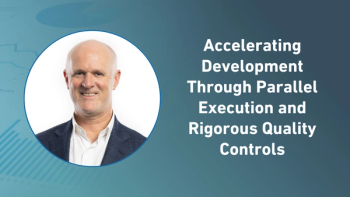
- Applied Clinical Trials-10-01-2022
- Volume 31
- Issue 10
Survey Investigates Backup Solution Adoption for ePRO Systems
Survey results emphasize need for flexibility in strategies.
The following is the second installment of a two-part series evaluating the use of backup solutions for electronic patient-report outcomes (ePRO) systems. Here, C-Path’s Electronic Clinical Outcomes Assessment (eCOA) Consortium presents results from a survey issued to 15 sponsors who are members of C-Path’s PRO Consortium and have a specific interest in eCOA systems. Twelve responses were received. The survey investigated backup solution adoption, justifications for solution selection, reasons why paper persists, and how backup data are evaluated.
General approach to backup solutions and justification for selection
When asked about their general approach to backup solutions:
- 4 sponsors include backup solution(s) in every trial.
- 2 sponsors include backup solution(s) for a specific subset of trials based on endpoint and/or indication.
- 2 sponsors provide backup solution(s) for only some trials but didn’t specify the criteria.
- 2 sponsors have internal guidelines for backup procedures.
- 1 sponsor does not have any internal guidelines and delegates the decision to the clinical teams.
- 1 sponsor does not use backup solutions.
The primary electronic backup solution of choice for those that employ them was a web backup. Paper remains prevalent and is often used in combination with a web backup.
- 7 respondents selected web as the primary back-up (but some commented they use multiple backup solutions within a trial).
- 4 respondents selected paper.
Interestingly, web backups are not used in isolation in our sample. Multiple respondents indicated that web backup is not always accessible; limited connectivity or device availability could be factors, and even if accessible, the web-based solution may still be challenging for specific participant populations and/or assessments. In such cases, sponsors have used alternative methods such as bring your own device (BYOD), interviewer administration of assessments, replacement devices, and/or paper. Early discussions with clinical teams and sites to identify situations that necessitate a more flexible or tiered backup approach is advised (e.g., the combination of web and BYOD).
Prevalence of paper
As indicated, paper backup is used by some sponsors as a primary backup solution. Based on the survey, paper backup is mostly used to support site-based ePRO collection. The principal reasons for use were:
- Ease of use for sites.
- Site activation prior to eCOA availability, specifically in localized languages.
- Feasibility for specific therapeutic areas.
Evaluation of backup data
Most respondents agreed data captured via backup methods should be identified as such in the dataset. It was unclear from responses if sponsors uniformly conducted sensitivity analyses prior to pooling these data. Further discussion on backup data is necessary; it is important to know if sponsors see differences in the data and how they assess the relative level of quality between the data. It is evident from the survey that respondents consider it to be critical to reduce the amount of missing data; and employ a variety of backup solutions to ensure data completeness.
Takeaways
Although not generalizable beyond the survey respondents, the results indicate that there is no universal solution. Strategies may adapt to the trial’s endpoint hierarchy, therapeutic area, and accessibility, and there is some desire for multiple options within a trial. Part 1 of this series suggested that with more flexible eCOA solutions, we may reduce the need for backups, specifically paper. Following the survey, we continue to champion the concept of flexibility. Respondents also acknowledged that what is planned is not always executed within the study. Clinical teams need immediate access to options such as web-based backup, BYOD, or replacement devices in order to pivot as needed, but this demands continued evolution of the eCOA systems used, inclusive of innovation in science, technology, device management, and technical support.
Authored on behalf of Critical Path Institute’s eCOA Consortium by Lisa Charlton, Senior Director, eCOA, Science 37; Shelly Steele, Senior Scientific Advisor, eCOA, WCG Clinical Endpoint Solutions; Celeste Elash, Vice President, eCOA Science, YPrime; and Scottie Kern, Executive Director, eCOA Consortium
Articles in this issue
about 3 years ago
Managing Biospecimens in Cell and Gene Therapy Trialsabout 3 years ago
The Risk-Reward Proposition for CGT Clinical Trialsabout 3 years ago
Philadelphia Shines in Cell and Gene Therapy Research Pursuitsabout 3 years ago
Scientists Don’t Ever Stop Sciencingabout 3 years ago
Applied Clinical Trials October 2022 Issue (PDF)about 3 years ago
Key Clinical Trial Industry Themes Post-COVIDNewsletter
Stay current in clinical research with Applied Clinical Trials, providing expert insights, regulatory updates, and practical strategies for successful clinical trial design and execution.






.png)



.png)



.png)
.png)
